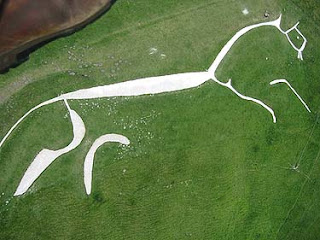(http://www.gourmetcoffeeisbetter.com/)
Legend has it, that a goat herder in Ethiopia noticed that his goats were more energized and awake after eating berries from a certain tree. He took note of his observations and told the news to an Abbott in his local monastery. The Abbott brewed a hot drink using the berries, and noticed an increase of alertness during his even hours of prayer. Eventually the news had spread across the globe.
The Arabs were the first to cultivate and trade coffee. During the 15th and 16th centuries, coffee was being produced in the Middle East and the Arabian Peninsula.
Coffee had become very popular in that region due to the fact that the Koran forbade Muslims to drink alcohol, they thought coffee was a more suitable substitute. The energy drink was known as the "Wine of Arabay."
Coffee had become the center of socializing. People engaged in conversations in coffee houses, and played games of chess while drinking cups of freshly brewed coffee.
By the 17th century, the news of the aromatic brew had reached Europe via travelers that had returned from the far east. But of course with new things, comes a party of opposition. Those who avoided the drink thought of it as an invention of Satan himself. In Venice, the local clergy had even condemned it. The debate over coffee became so intense that Pope Clement VIII was asked to intervene. However, the Pope decided to try it out himself, and was so satisfied with its effects, that he gave it his approval.
Coffee had entered the social realm once again, this time in Europe. Coffee houses, known back then as "penny universities," had sprung almost everywhere within the continent. Penny Universities earned its name due to the fact that anyone could purchase a cup of coffee for just one cent, and engage in many social events with other fellow coffee drinkers. These coffee houses attracted a vast array of people with common interests, such as merchants, brokers, and artists.
The Dutch were the first Europeans to cultivate coffee, having first planted them in India. Production in India did not succeed, however, success came to the Dutch on the Island of Java, now present day Indonesia. Since then, the Dutch began to trade coffee.
In 1714, the mayor of Amsterdam had given King Louis XIV of France a coffee seedling as a gift, which was then planted in the Royal Botanical Garden in Paris. About a decade later, a Naval Officer name Gabriel de Clieu managed to obtain a seedling from the royal garden. After a rough voyage by see, he was able to introduce coffee to Martinique. That seedling grew and blossomed, and was able to produce 18 million trees in a span of 50 years.
Missionaries and travelers continued to spread coffee and introduce it to many different lands and cultures. Plantations were built within forests, or on mountain tops. Some nations were born out of the coffee industry. Today, coffee remains as one of the most valuable commodity crops. So next time you have that hot cup of Joe, think about the journeys that took place to bring you your daily morning cup of coffee.
(http://www.ncausa.org/i4a/pages/index.cfm?pageid=68)


































